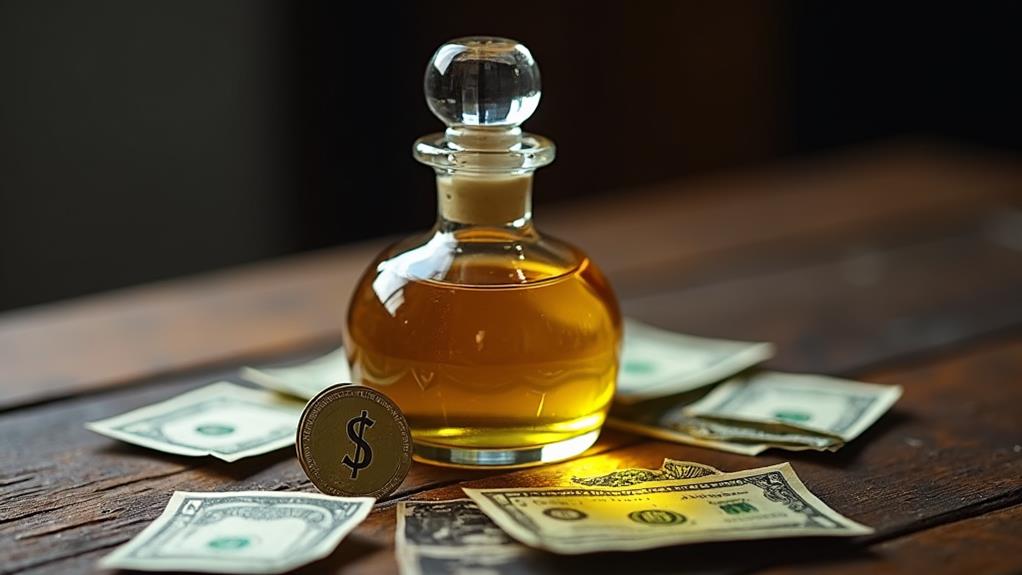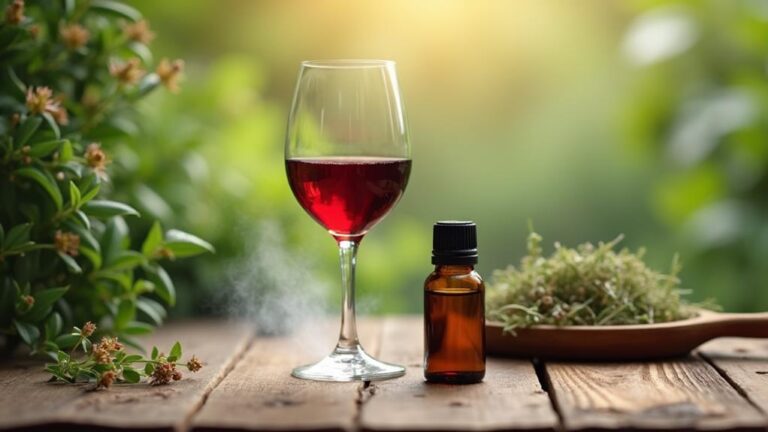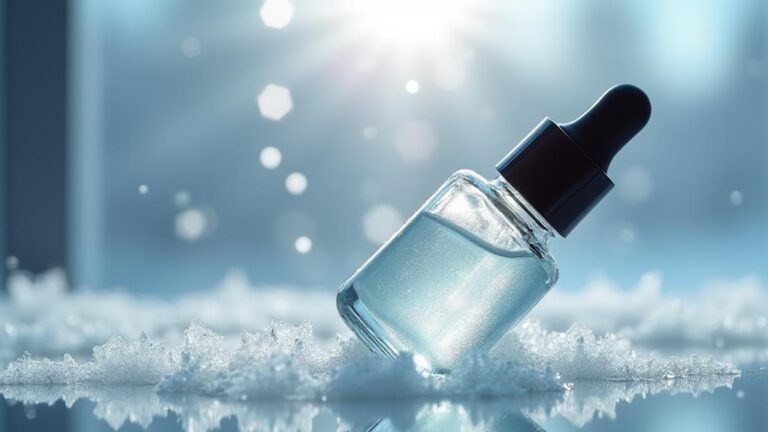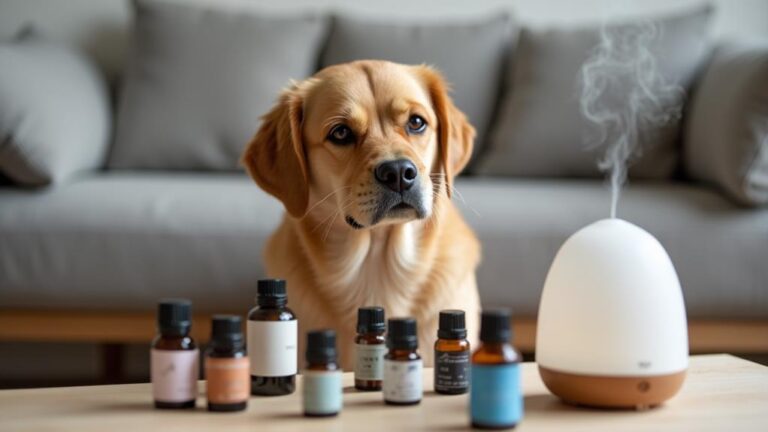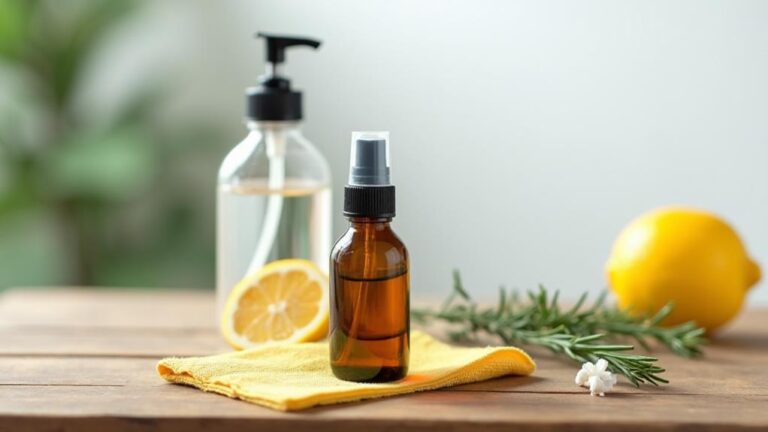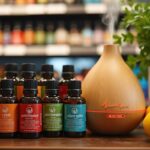If you're an essential oil enthusiast, you've likely come across some luxury options that catch your eye – and your wallet. Lavender, Frankincense, Agarwood, Rose Absolute, and Sandalwood are five oils that stand out for their exceptional quality and hefty price tags. What drives their supreme cost? From labor-intensive cultivation to specialized equipment and expertise, several factors contribute to their luxury status. As you explore these oils, you'll discover the intricacies of their production processes and the distinct therapeutic properties that make them worth the investment. But what's behind the specific costs of each oil?
Key Takeaways
- Lavender oil's cost is influenced by labor-intensive cultivation and high-quality production methods.
- Frankincense oil's supreme cost is due to labor-intensive resin harvesting and Boswellia tree rarity.
- Agarwood oil's high price is attributed to the quality of the Agarwood tree and steam distillation methods.
- Rose absolute oil's price is affected by extraction techniques, solvent removal, and high-quality rose sourcing methods.
- Sandalwood oil's luxury grade is due to mature tree harvesting, steam distillation, and sustainable practices.
Lavender Oil Price Breakdown
When it comes to essential oils, lavender oil is one of the most widely used and sought-after varieties. This is largely due to the numerous benefits it provides, from its calming effects and soothing properties to its use in skincare and haircare routines.
Lavender oil's popularity makes its price breakdown essential to understanding its overall value.
Lavender cultivation plays a significant role in determining the oil's price. The ideal climate for lavender cultivation is dry and sunny, which is why countries like Bulgaria and France are among the largest producers.
However, cultivating lavender can be labor-intensive and requires careful attention to guarantee high-quality plants. This process contributes to the oil's cost, which can vary depending on factors like the type of lavender, cultivation methods, and production volumes.
The numerous benefits of lavender oil make it a worthwhile investment for many. It has been shown to have anti-inflammatory properties, promote relaxation, and even improve sleep quality.
As a result, the price of lavender oil is often justified by its versatility and effectiveness.
Frankincense Oil Supreme Cost
Frankincense oil, also known as olibanum, is one of the most prized essential oils due to its potent therapeutic properties.
Derived from the Frankincense resin, which is extracted from the Boswellia tree, this oil has been used for centuries in ancient rituals and traditional medicine.
You'll find that the cost of Frankincense oil is often higher than other essential oils due to the time-consuming process of harvesting the resin.
Here are some key factors that contribute to the supreme cost of Frankincense oil:
- Harvesting process: Frankincense resin is collected by making incisions in the Boswellia tree, allowing the resin to flow out and harden. This process is labor-intensive and time-consuming.
- Quality of the resin: The quality of the Frankincense resin greatly affects the quality of the oil. High-quality resin is harder to come by, which increases the cost.
- Distillation process: Frankincense oil is distilled from the resin, which requires specialized equipment and expertise.
- Rarity of the Boswellia tree: The Boswellia tree is native to specific regions, making it difficult to cultivate and harvest on a large scale.
As a result, Frankincense oil is considered a luxury item, and its supreme cost reflects the effort and expertise required to produce it.
Agarwood Oil High Quality
Agarwood oil, extracted from the heartwood of the Aquilaria tree, is one of the most distinctive and sought-after essential oils due to its unique, complex fragrance profile and potential therapeutic benefits. The Agarwood tree, native to Southeast Asia, is the source of this precious oil.
When you're looking for high-quality Agarwood oil, it's vital to understand the agarwood extraction methods used. There are several methods, including steam distillation, solvent extraction, and CO2 extraction. However, high-quality Agarwood oil is typically obtained through steam distillation, which preserves the delicate chemical compounds of the oil.
The quality of Agarwood oil also depends on the quality of the Agarwood tree itself. Trees that are infected with a specific type of fungus, Phialophora, produce a higher-quality oil.
This fungus stimulates the tree to produce a unique resin, which is rich in sesquiterpenes, the primary constituents of Agarwood oil. When you purchase high-quality Agarwood oil, you can expect a rich, woody, and slightly sweet fragrance, along with potential therapeutic benefits, including stress relief and skin issues.
Rose Absolute Oil Price
As you explore the domain of premium essential oils, you're likely to encounter another prized extract: Rose Absolute oil.
This luxurious oil is obtained through absolute extraction techniques, which involve solvent extraction and subsequent removal of the solvent through vacuum distillation or evaporation.
The process is complex and labor-intensive, contributing to the high price of Rose Absolute oil.
Rose sourcing methods also play a significant role in determining the price of Rose Absolute oil.
High-quality roses are typically sourced from Bulgaria, Turkey, and Morocco, where the climate and soil conditions are suitable for rose cultivation.
The quality of the roses, combined with the absolute extraction techniques, results in a premium essential oil with a distinct fragrance and therapeutic properties.
Some key factors affecting Rose Absolute oil price include:
- Quality of roses: Fresh, organic, and pesticide-free roses are more expensive than lower-grade alternatives.
- Extraction method: Absolute extraction techniques require specialized equipment and expertise, increasing production costs.
- Solvent removal: Vacuum distillation or evaporation methods used to remove solvents can be costly and time-consuming.
- Regional sourcing: Roses sourced from premium regions like Bulgaria and Turkey can command higher prices due to their high quality and distinct fragrance profiles.
Sandalwood Oil Luxury Grade
What sets apart Sandalwood oil luxury grade from its more affordable counterparts? You'll find that luxury grade Sandalwood oil is harvested from mature Sandalwood trees, typically those that are 60 years or older.
This lengthy maturation process allows the trees to develop a higher concentration of sesquiterpenes, which are the compounds responsible for the oil's distinct aroma and therapeutic properties.
In contrast, more affordable Sandalwood oils may be sourced from younger trees or use Sandalwood substitutes, such as Amyris or Australian Sandalwood. While these substitutes can mimic the aroma of Sandalwood, they often lack the depth and complexity of true Sandalwood oil.
Luxury grade Sandalwood oil, on the other hand, is carefully extracted through steam distillation, which helps preserve the delicate compounds found in the wood.
When sourcing Sandalwood oil, look for suppliers that adhere to sustainable and responsible harvesting practices. This not only guarantees the long-term viability of Sandalwood trees but also results in a higher-quality oil.
Frequently Asked Questions
Can Essential Oils Be Used by Pregnant Women?
When you're pregnant, using certain essential oils can be beneficial, but you must prioritize fetal safety. Research the specific oil and its safety during different pregnancy stages, as some may cause complications or affect fetal development.
Are Essential Oils Safe for Pets at Home?
When introducing pets to your home, you should consider pet allergies and potential toxic exposure from various substances. Essential oils, in particular, can be hazardous if not used carefully, as they can cause adverse reactions in pets.
Can I Ingest Essential Oils for Health Benefits?
When considering internal dosing methods, you're putting yourself at risk of essential oil toxicity. You shouldn't ingest essential oils without consulting a healthcare professional first, as they can be highly concentrated and cause harm internally.
How Do I Store Essential Oils Properly?
You safeguard fragile liquids, yet neglect your essential oils. For ideal Essential Oil Preservation, store them in airtight, Dark Glass Containers, protecting them from light degradation and oxidation, thereby maintaining their potency.
Can I Use Essential Oils on Children's Skin?
When it comes to your baby's skincare, you're cautious about what you apply, especially if they have child eczema. You're right to be – their skin is delicate, so it's vital you research and consult a doctor before applying anything.
Conclusion
You've unraveled the mysteries of these 'liquid golds,' reminiscent of the fabled 40 thieves of Arabian Nights who risked it all for a treasure trove of precious oils. The exorbitant prices of Lavender, Frankincense, Agarwood, Rose Absolute, and Sandalwood oils are evidence of their rarity, labor-intensive cultivation, and exceptional quality. These luxury items offer distinct therapeutic properties, making them worth every penny for those who seek the ultimate aromatherapy experience.


